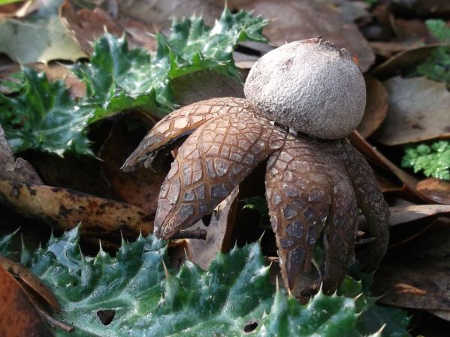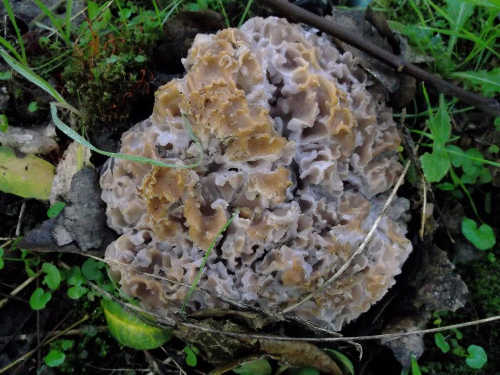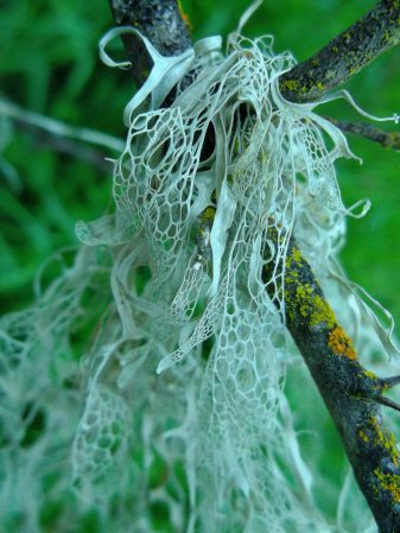
NORTHERN CALIFORNIA – You might think that during the winter months, when all the pretty flowers are gone, grasses are going dormant and wildlife is in migration or hibernation mode, that there’s not a lot to see in the wild areas in northern California, but you’d be wrong.
Weather permitting (the wetter the better), December, January and February are some of the best months for viewing the local region’s fungi and lichen.
Some are crusty, some are gelatinous, others tough as leather, and they come is a huge variety of shapes and colors: everything from pure white to purple and even bright orange!
Fungi are those members of the kingdom that includes everything from mushrooms to slime molds. They don’t produce chlorophyll, can’t fix carbon, and use spores to reproduce.
Of the common fungi in the area, some of the most interesting ones include sulfur shelf fungus (Laetiporus sulphureus) also called the “Chicken of the Forest.”
It is a kind of bract fungus that grows on trees. It’s most notable and recognizable for its bright orange and yellow color.
When it first starts out, it looks like a painful orange swelling on the tree and sometimes weeps orange-gold “tears.”
Eventually, though, the swelling reforms itself into one or more half-moon shaped plates that protrude out from the tree like shelves.
As the plates age, they lose their distinctive coloring and become very leathery.
Earth stars (Geastrales) are one of the more interesting forms of fungi we can find especially in riparian (river’s edge) areas.
There are about 64 different species of these beasties, but they all have a similar look: a puff ball belly surrounded by a leathery petals that form a star shape when they open.
I usually find these in areas where the grass and leaf litter on the forest floor is thin; places where the stars can lift themselves up to the surface without having to fight through too much overgrowth.
The petals of the Earth Stars are hard and leathery in the dry months and clutch up tightly like a fist around the puff ball center.
After a rain, though, the petals unfurl and allow the puff ball in the middle to release its cache of spores.
One kind of fungus I found recently, that I hadn’t seen in the area before, was a large specimen of Cauliflower Fungus (Sparassis radicata).
These fungi look like large, roundish, gray-colored brain or cauliflower floret. The one I saw was about the size of a softball, but they can get up to half a meter in size and weigh up to 30 pounds!
Cauliflower Fungus is parasitic and likes to grow where the roots of oaks and fir trees come close to the surface.
Although often misidentified as a fungus, lichen is actually a “symbiotic” union between fungus cells and algae cells.

The fungus cells help to keep the algae protected during times of heat and low moisture, and the algae cells help the fungus to get the carbon and carbohydrates it needs.
Of the local lichen the most recognizable one – especially in Napa County – is Lace Lichen (Ramalina-menziesii), often called Spanish Moss (even though it’s not moss at all).
In the dry months, it looks like scraggly, dead “hair”, but when the rains come it shows off how incredibly lovely it really is: a pale green lace-work pattern of branching loops and lines.
Go outside and see how many different kinds of fungi and lichen you can spot in a day.
Have fun – but be careful. Don’t eat any of the mushrooms you find; many of them are poisonous.
Also, remember that fungi play an important role in the ecosystem. They are a necessary component of any habitat because they help to break down and recycle organic matter (dead plants and animals).
So, leave the fungi where they are, and take home photos of them instead.
Tuleyome Tales is a monthly publication of Tuleyome, a nonprofit conservation organization based in Woodland and Napa, Calif. For more information about Tuleyome go to www.tuleyome.org . Mary K. Hanson is an amateur naturalist and photographer and author of The Chubby Woman’s Walkabout blog.


 How to resolve AdBlock issue?
How to resolve AdBlock issue? 



